Looking at the legs
You must now uncover and inspect the legs.
- Muscle wasting
- Swelling either or both legs
- Leg ulcers
- Coolness
- Bluish colour either or both
- Rashes
- Petechial haemorrhages
- Tenderness of calf either or both
- Equal length of legs
- Swelling or warmth of knee either or both
| AFRIKAANS | TRANSCRIPT | XHOSA |
|---|---|---|
| May I look at your legs./ Mag ek u bene ondersoek? / Ndingajonga imilenze yakho? | ||
| We need to lift the bedclothes./ Ek sal die beddegoed moet optrek. / Kufuneka sinyuse iimpahla zakho. |
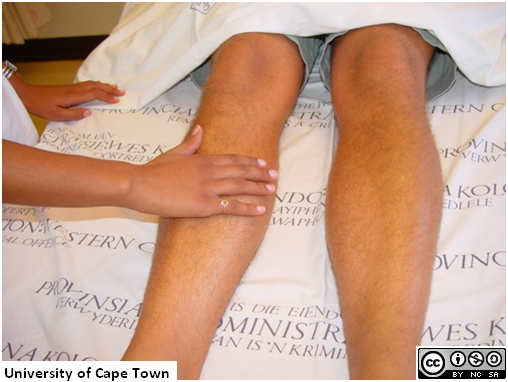
The following are some of the abnormalities you need to look for. Make sure you read about their significance.
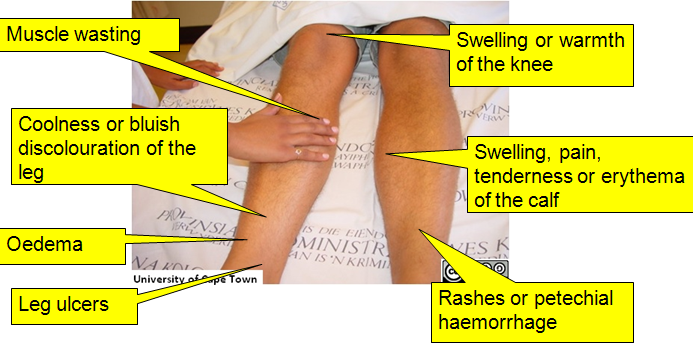
And in the feet:
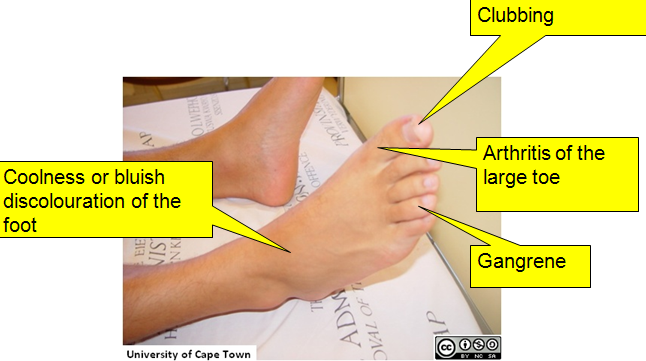
REMEMBER BOTH FEET
- Arthritis of big toe
- Sores on toes or soles or heels
- Gangrene toes or soles or heels
- Clubbing of toenails
- Swelling
- Bluish discolouration
- Any discolouration
- Asymmetrical position of foot
- Skeletal abnormalities
- Pedal pulses (dorsalis pedis; posterior tibial)
| AFRIKAANS | TRANSCRIPT | XHOSA |
|---|---|---|
| Now your feet please./ Nou sal ek u voete ondersoek. / Ngoku ndicela iinyawo zakho | ||
| May I take your socks off?/ Mag ek u sokkies uittrek? / ndingakhulula iikawusi? |
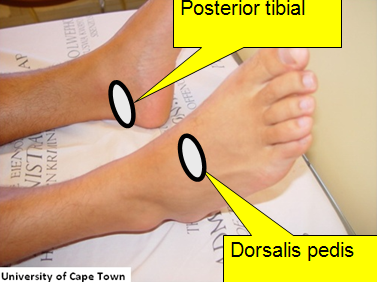
Here the legs are uncovered and inspected.
Run the hand down each leg and each calf, feeling for temperature differences. Warmth may suggest inflammation: coolness a poor arterial supply.
Test for oedema by firmly pressing a finger for several second into the skin over a bone - the anterior surface of the tibia is best.
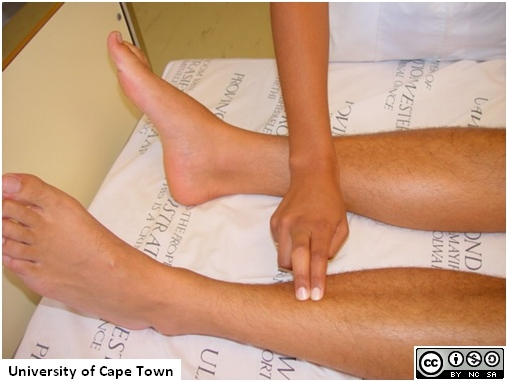
If oedema is present, a small depression is left when you remove your finger. This is known as pitting oedema.
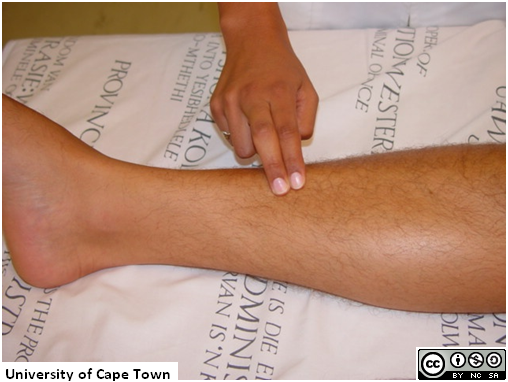
See how this is done.
Now palpate the dorsalis pedis pulse on each side.
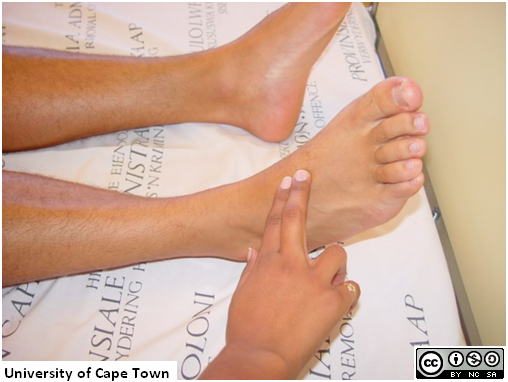
The artery runs down the highest part of the foot, towards the big toe.
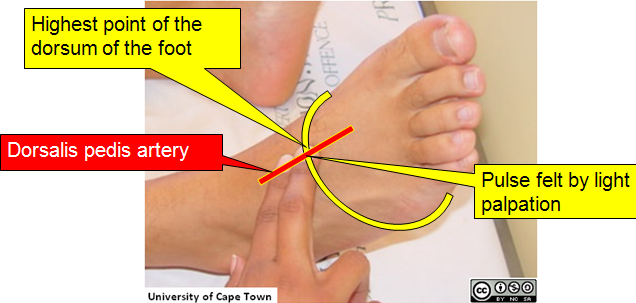
Feel for the pulse on each side. If easily palpable, the arterial supply to each foot is probably normal. If it cannot be felt, there is a possibility of peripheral vascular disease, and other leg pulses (femoral, popliteal, tibialis anterior) should be carefully examined.
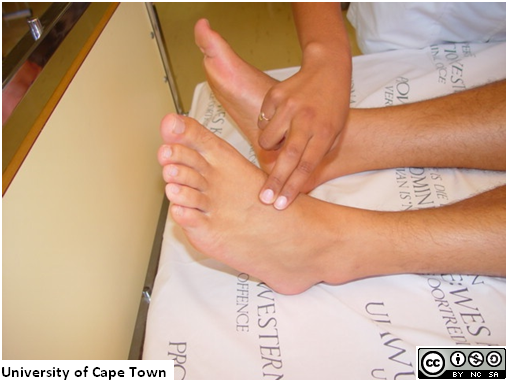
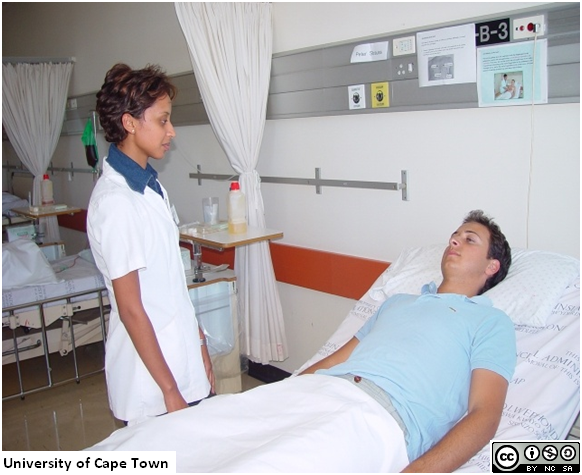
| AFRIKAANS | TRANSCRIPT | XHOSA |
|---|---|---|
| Thank you very much./ Baie dankie. / Enkosi kakhulu. | ||
| You have been most helpful./ Dankie vir u samewerking. / Ube luncedo ngeyona ndlela. | ||
| Is there anything you wish to ask?/ Het u enige vrae? / Akukho nto ufuna ukuyibuza? |
